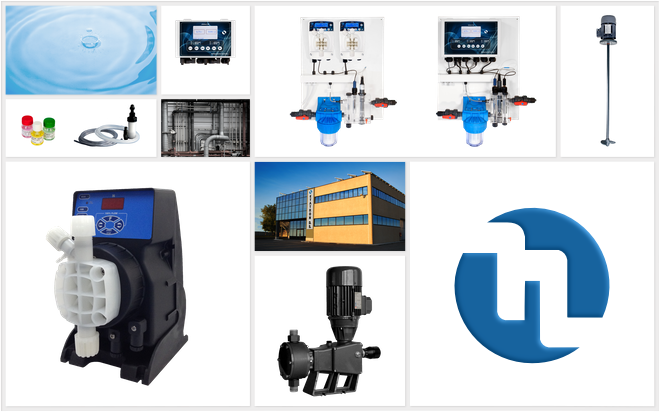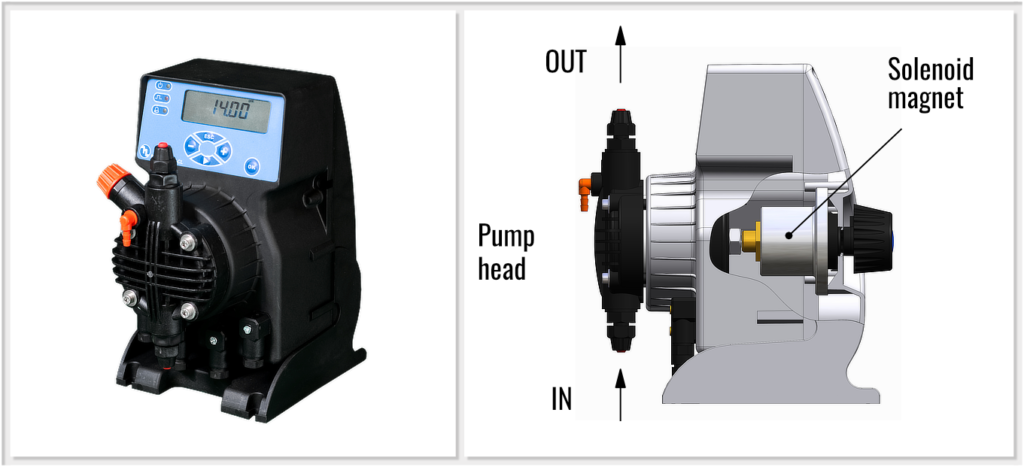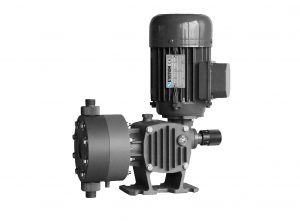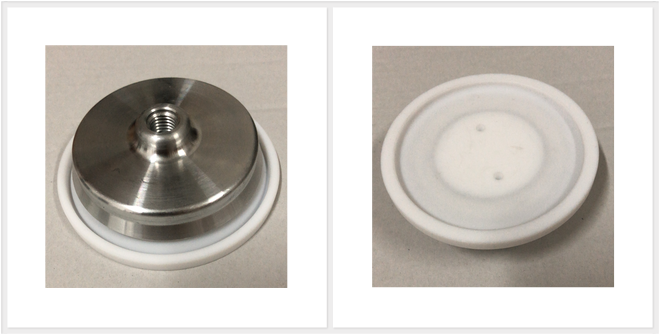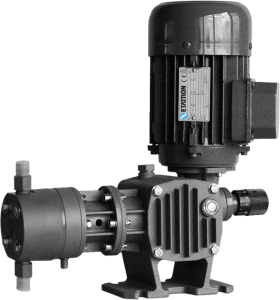Chemical Dosing
An Introduction
Wherever you find an industrial process you will find water – and then you find dosing pumps for chemical dosing. Why? Because that which makes water perfect for all life on Earth is also what makes it perfect for industry – solubility. The vast chemical complexity offered by water solubility means there is no end to the industrial processes that use it.
Therefore, chemical dosing means dissolving chemicals in water to produce desired effects in an industrial process. For this you need a dosing pump.
Dosing Pumps and Chemical Dosing
A dosing pump is a type of positive displacement pump whose operation is characterized by forcing liquid out of a fluid chamber with a mechanical actuator. A dosing pump is therefore a precision instrument for accurately feeding a determined amount of liquid into a process. They are for repeated accuracy of operation, often in combination with sensors such that the pump adjusts it’s speed and/or stroke length in response to changing chemical conditions in the industrial process.
Ideally a dosing pump can handle a wide range of highly corrosive, volatile or toxic chemicals. However depending on application there is scope for economizing on materials and on pump design to maximize efficiency.
Solenoid Pumps
A solenoid pump uses a strong electromagnet to actuate a mechanical diaphragm within the flow chamber of a pump head.
The DLX Pump – a solenoid dosing pump
Solenoid pumps are ideal for smaller dosing operations (less than 80 L/h) because they minimize power and materials cost. Furthermore, they are well suited to sensor control because they inherently use electronics in control functionality. Etatron produces 4 models of solenoid pump, in order of flow rate they are: the PKX, the DLX, the eOne and the BT.
Motor Pumps
A motor pump uses an electric motor. A crank mechanism converts the rotary motion of the motor into linear motion. They are generally far more powerful than solenoid pumps with the heaviest motor pumps capable of pumping thousands of litres per hour.
Diaphragm Pumps
Pictured: An Etatron AD Diaphragm Pump
Unlike the solenoid pump however the motor pump is inherently harder to control. Adjusting the flow rate without downtime requires specialized servo control devices or electronic engineering of the motor itself with an inverter. Etatron produces two basic types of motor pump. The first are mechanical diaphragm models, the AD and BD range. The second are mechanical piston pumps, the AP and BP range.
Broadly speaking mechanical diaphragm pumps use the linear motion produced by a crank to actuate a diaphragm.
Pictured: Diaphragms for the Etatron AD pump that push the liquid out of the flow chamber
The diaphragm is a flexible disc that directly forces the liquid out of the fluid chamber of the pump. This result is the suction and discharge process within the pump head.
To summarize; diaphragm pumps are low cost, with zero leakage and can handle abrasive and viscous liquids. As a disadvantage the diaphragm will distort under high pressure as time goes on. Therefore, this reduces accuracy.
Piston Pumps
Pictured: An Etatron AP Piston Pump
In contrast a mechanical piston pump uses a piston to drive the fluid. The forward stroke of the piston displaces the liquid out of the discharge check valve. The high pressure rapidly closes the suction check valves. In addition because the piston is formed from solid material (AISI 316L or Ceramic) it is far harder to mechanically deform under pressure leading to accurate performance under high pressure conditions. A piston pump uses a mechanical seal to prevent back-flow. Abrasive fluids are therefore incompatible because grit damages seals.
The Dosing Process
Below is a schematic diagram of a broadly typical chemical dosing process:
The controller sends a signal to the pump based on the water chemistry. The pump then doses the desired amount of chemical into the piping. This system therefore allows the treatment of water across continuously changing conditions to accomplish a given need.

Related products
BP Series Motor Pump
The BP Series motor pump is a mechanical piston pump capable of 1027 L/H at up to 25 bar of pressure.
PKX Series Dosing Pump
The PKX is a solenoid dosing pump designed for simplicity. Flow rates range up to 7 l/h and 5 bar of pressure depending on model.
eOne Dosing Pump
The eOne is a highly capable solenoid chemical dosing pump. It has manual, 4-20 mA and pH/Rx/Chlorine control functions.
AD Diaphragm Motor Pump
The AD diaphragm motor pump offers flow rates of 123 l/h and pressures of up to 14 bar depending on model.

